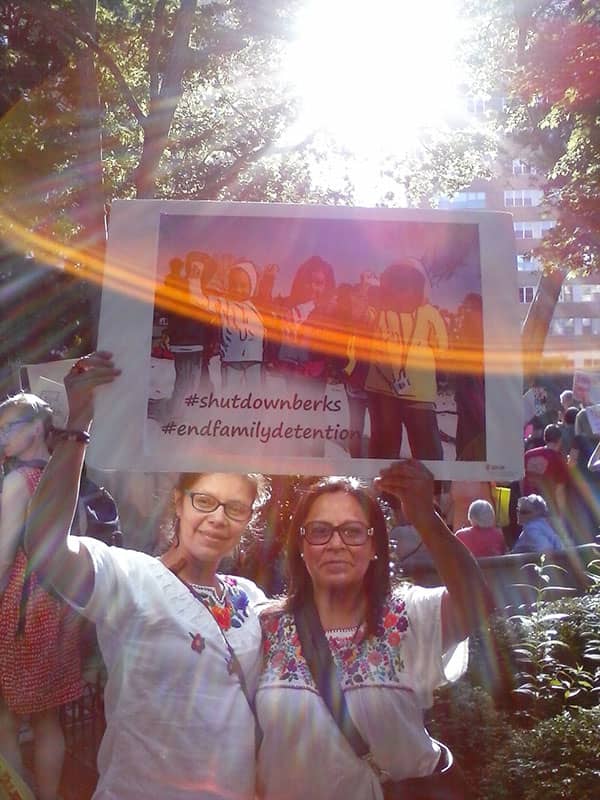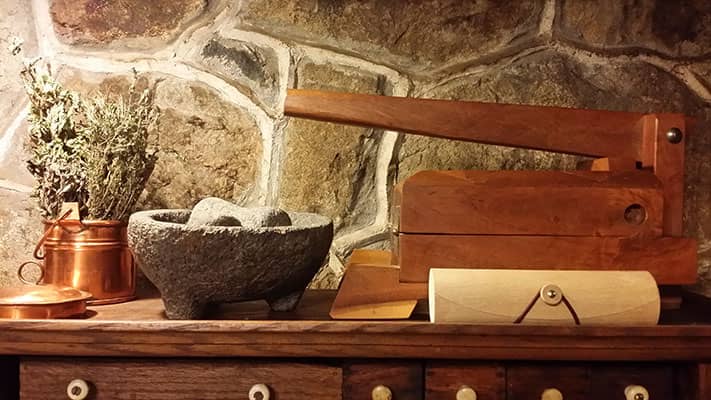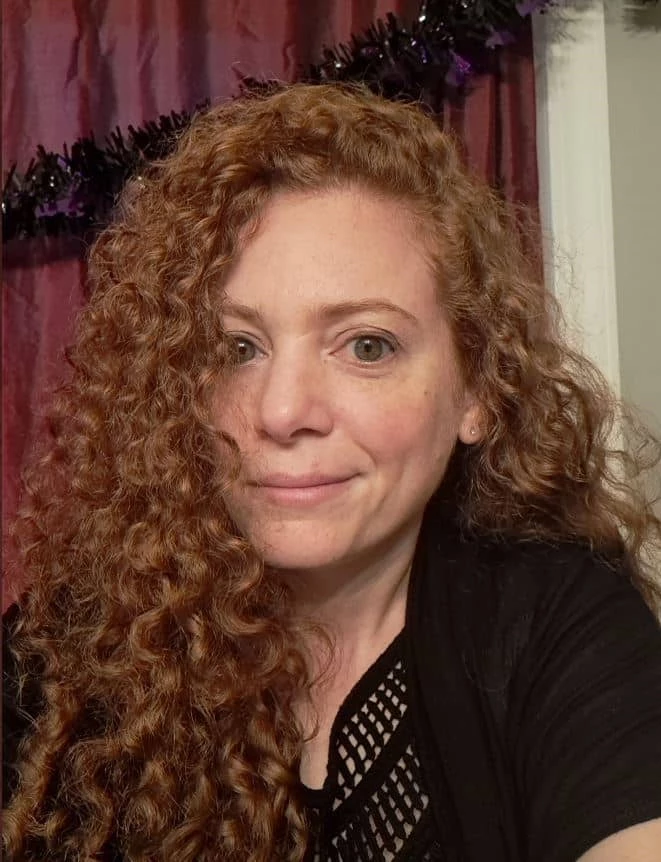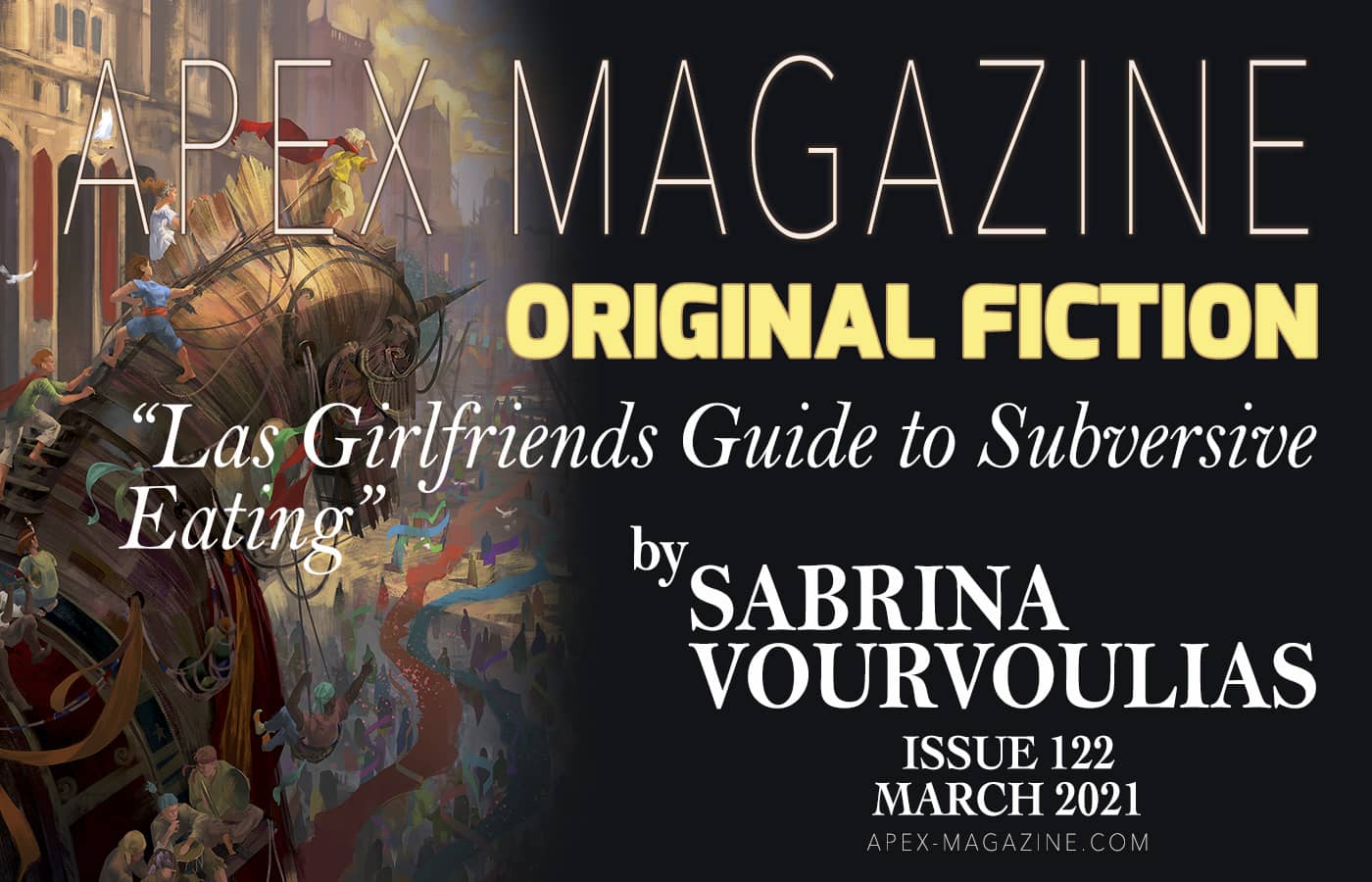
Take a walk down the streets of Philadelphia. You can take any path you choose. Wander the city in any order you choose. To be honest, your best bet is to follow your nose and eat where the locals eat. If you are very, very lucky, you might just happen to eat some life-changing tacos. Whatever direction you choose, don’t forget to visit the mushroom man.
Reading Sabrina Vourvoulias’s “Las Girlfriends Guide to Subversive Eating” is going to make you hungry, and not only for tamales. This story will make you hungry for justice and knowledge, it will make you want to explore not only Philadelphia, but your local foodways and the pervasive issues affecting your local community. It will make you hungry for interactive fiction. Yes, I said interactive! A first for Apex Magazine, “Las Girlfriends Guide to Subversive Eating” is an interactive audio-visual, multi-language, fully sensory experience!
A community’s food reflects its culture and history, and modern cities are no exception. Vourvoulias speaks loudly and proudly of the issues facing the Latinx community in Philadelphia and allows for a discussion that realizes that immigration is just one of many issues on the table. Her characters have friends everywhere, know the best eateries, know whose stories need to be heard, and will go to great lengths to protect the local magical secrets. Crank up the included soundtrack and prepare to lose yourself in the joys of magical food. If you are familiar with Vourvoulias’s previously published short fiction, you'll recognize the Las Girlfriends and a few locations, as this newest story is part of her Magical Philadelphia series of short stories.
And there’s something so alluring about magical food, isn't there? Sure, you can have a magical sword, or a magical talisman, or some kind of spell that protects you, but all of those things are on the outside —they are separate from you, as a person. Ah, but food! Someone took their time and energy to make the food, and then when you ingest it, it becomes an inseparable part of you. I could chatter on about my obsession with magical food for hours, but you came here to learn about Sabrina Vourvoulias, so let's get back to her.
A highly respected investigative journalist, Vourvoulias writes about social activism, community leaders, and immigration issues facing the Latinx community, among other timely topics. Her articles have been featured in The Guardian US, Philadelphia Magazine, NBC Philadelphia, Al Dia News, Telemundo 62, Philly.com, and elsewhere. She’s been named Editor of the Year by the Pen & Pencil Club of Philadelphia, and she has received multiple José Martí awards. She has been the managing editor of Al Día (Philadelphia’s Spanish-language newspaper), and project editor of the Philadelphia Reentry Reporting Collaborative. Her work educates as it interrogates.
Vourvoulias’s fiction, fiction related essays, and poetry have been published in Uncanny, Apparition Lit, Strange Horizons, Crossed Genres Magazine, Tor.com, Floricanto at La Bloga, Graham House Review, and in numerous anthologies, and her 2012 novel Ink was recently republished by Rosarium Publishing.
You can learn more about Vourvoulias at her website SabrinaVourvoulias.com. She was kind enough to chat with me about writing interactive fiction, film making, the joys and challenges of Philadelphia, reader engagement, the connections between writing fiction and doing investigative journalism, and of course food!
APEX MAGAZINE: As far as I know, “Las Girlfriends Guide to Subversive Eating” is the first interactive story Apex has published. What was your creation process for the audio-visual aspects of this story? Going beyond audio/visual, the story also has a soundtrack! Tell us about the music you chose.
SABRINA VOURVOULIAS: I started writing this story the conventional way, and I think I was about 400-500 words in when I realized I wanted it to include non-text elements, and then decided it would be a fun challenge to make it interactive.
In terms of the visual elements, it’s a little known fact about me that in high school and college my principal art form wasn’t writing but film making. I often miss the audio and visual layers film provides a story, so I started planning to include a few audio clips and once that happened there was bound to be a soundtrack.
I started building the soundtrack with a song I adore, “La Cumbia del Mole” by Lila Downs (which has versions in English and Spanish), added some old favorites of mine by Café Tacvba and Sidestepper, and backfilled it with other food-related songs (a few were new to me) and a few songs that had nothing to do with food and everything to do with being a Latina in the U.S. in past number of years.
AM: Where did the idea for this story come from?
SV: Las Girlfriends were secondary characters in a story I wrote and published in 2014 (“Skin in the Game”), and another story I published in 2018 (“The Life and Times of Johnny the Fox”). I really liked them as characters and liked the possibilities they presented—I mean, how many older Latinas are the main protagonists of speculative short fiction? Plus, I had invented the tamágicos in that first story and hadn’t really explored fully what they might mean in the world Las Girlfriends and their loved ones inhabit … so the story was born.
AM: Within the text of the story, you've interwoven audio clips and links to other websites.What might’ve a story like this looked like if you had written and published it before the internet was a thing?
SV: I’m not sure it could have been written before the internet. Its form and structure are informed by the way websites function, and both character development and some of the plot hinges (in places) on the sort of information sharing that is only possible thanks to the web.
AM: “Las Girlfriends Guide to Subversive Eating” is part of your Magical Philadelphia series of stories. What makes Philadelphia such an ideal location for magic? Do you have plans to write more Magical Philadelphia stories?
SV: Philadelphia is one of those great cities that hasn’t been gentrified into generic yet—though, of course, that’s one of the threats it faces as money is directed into its prosaic corporate headquarters-and-hotel-and-condo-filled Center City. Amid Philly’svery real problems (it’s the poorest big city in the nation and has a horrific gun violence rate) this is a city of neighborhoods that fight to retain their fierce and fiercely distinctive poetry (each neighborhood with its own cadence, its own rhythm). Philly folks are deeply rooted, but they know how to leap, and how to conjure the unexpected. So an old shipping container in West Philly becomes a tech forward farm; a homeowner in El Barrio decides to thatch the trellis over their enclosed garden with plushies in the shape of unicorns; an ordinary middle-aged woman resurrects 200 people who die on the streets ofFairhill and Harrowgate. There is so much real magic happening in the city, fiction doesn’t need to invent it … and, yes, I intend to keep writing magical Philadelphia stories.

AM: The families in this story put their magic into their food. Why use food as a vehicle for magic and spells? Why not magical clothing, or a magical hairbrush, or magical music? (I mean, I love food and cooking and the intersection of culture and history and recipes, so THANK YOU for making this about food!)
SV: Food is a primordial, everyday magic—from the alchemy of cooking it to the ritual of ingesting it—and there is no magic that is more universal and yet so culturally (even familially) specific. I love to cook (and garden, and eat) so a number of my stories touch on the magic of food.
Sewing and making music are also great vehicles for magic (I’ve written stories with magical versions of both) but neither of them are fundamentally necessary for survival … and this is, at its core, a story about the magic of survival.
As for magical hairbrushes, hmmm, I haven’t thought about those ...
AM: The opening screen offers a number of paths the reader can take; they can interact with this story in any order they choose. Typically, an author has full control over the order in which their readers gain information about what’s going on in the story (provided the reader doesn’t jump to the last page, of course!). What was it like to write and present a story in which you give up complete control of the order in which the story is presented?
SV: I thought of it as a website—albeit a long-winded and talky website—so I wasn’t super concerned about the order. I trust readers. If they jump “ahead” and encounter some reference they don’t understand, they’ll jump back to look for it (or do without). Sort of the same way you do if you encounter a word you don’t recognize, or a word in a language you don’t know.
I was more concerned with finding ways to keep them engaged through each jump—that’s really why there are links, different kinds of embedded audio, a map and photos, the option to flip text from Greek or Spanish into English. In an earlier draft of the story there were even jigsaw puzzles the reader could put together ... A linear read of the story was always optional to me, reader engagement was not.
AM: You are a journalist and a writer of fiction. Among other commonalities, fiction and journalism require attentiveness, a hook, and the ability to engage the reader. On the surface, writing fiction would appear to be an art form free from limitations—you can literally make things up! Have you found that to be entirely true? Does fiction have limits that journalism is able to bypass?
SV: Yes, you can make up whatever you can imagine in fiction, though I’d argue that no matter how fantastical, it still has to ring true.
We tend to think of fiction as being more open-ended than journalism, when the truth is almost exactly the opposite. Even if the fictional story ends in a way that feels unresolved, it ends exactly where the author wants it to end. There is certitude in that end that doesn’t exist in journalism. When you finish (and even publish) an article, you understand its end is only the end for today (or this hour). Tomorrow (or the next hour) might reveal that what you thought was the end is really the middle of the story, and the day after tomorrow (or a few hours later) you may realize, nope, it’s just the beginning.
AM: How has your journalism informed your fiction? On the flip side, how has writing fiction changed how you approach journalism?
SV: Journalism lends my fiction discipline and immediacy, as well as its sense of something larger lurking beyond the frame of the story. Fiction lends my journalism a love of, and skill with, language itself, as well as its sense of something running clear and deep beneath the surface of the story.
It isn’t actually that unusual to ply both disciplines, especially in Latin America. There are a number of authors whose works I admire who were both journalists and fiction writers: Gabriel García Márquez, Elena Poniatowska, Eduardo Galeano, Mario Vargas Llosa (his early fiction, really), George Orwell, Italo Calvino, etc.
AM: Thank you, Sabrina. I can't wait to read more Magical Philadelphia stories!











